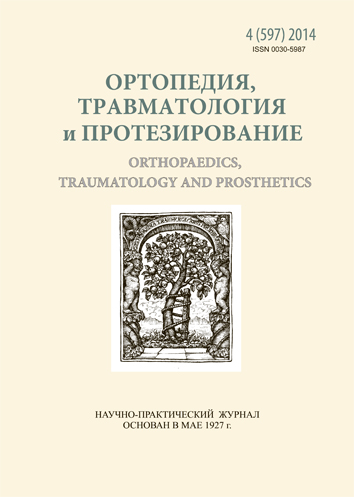Biomechanical substantiation for tactics of surgical treatment in cases of flexor tendons of the hand fingers damage in the «critical» zone
DOI:
https://doi.org/10.15674/0030-59872014420-25Keywords:
tendon, superficial and deep flexors, critical zone, annular ligaments, isolated damage, strainAbstract
While in reconstructive surgeries after flexor tendons of the hand fingers damage a question on appropriateness of maintaining of the superficial flexor tendon (subject to its integrity). Purpose: based on biomechanical studies and mathematical analysis of the stress-strain state (SSS) of the fingers̕ flexor apparatus and to substantiate tactics of treatment for patients with isolated flexor tendons of the hand fingers injuries. Methods: Calculations on tension changes in anatomic areas annular ligaments and tendon insertions of superficial and deep flexor tendons depending on the bending angles in the interphalangeal joints were done. Using finite element analysis we built three models: 1 — with intact tendons of superficial and deep flexor tendons, 2 — with damaged superficial flexor tendon, 3 — with damaged deep flexor tendon. Calculations of SSS for structures of flexor fingers apparatus were performed. Results: it was proved that in the absence of superficial flexor tendon at intersegmental flexion angles from 0º to 70º tension in the distal tendon attachment points of the deep flexor and in annular ligaments A3 and A5 increases with the maximum values when bent 70º. We propose a two-stage method of the deep flexor tendon plastic with maintenance of superficial flexor tendon (patent of Ukraine № 85349). Conclusions: in the standard load on the flexion apparatus of the fingers in cases of isolated deep flexor tendon injuries it is advisable to maintain the superficial flexor for prevention of overstrain in the distal point of the deep flexor tendon insertion as well as ligamentous apparatus of the finger (annular ligaments A1–A5).
References
- Two-stage flexor tendon reconstruction in zone II, using Hunter´s technique / S. Sun, Y. Ding, B. Ma, Y. Zhou // Orthopedics. — 2010. — Vol. 33 (12). — P. 880, doi: 10.3928/01477447-20101021-10.
Downloads
How to Cite
Issue
Section
License
Copyright (c) 2014 Igor Kurinny, Igor Lazarev, Maryna Yarova, Maksim Skyban

This work is licensed under a Creative Commons Attribution 4.0 International License.
The authors retain the right of authorship of their manuscript and pass the journal the right of the first publication of this article, which automatically become available from the date of publication under the terms of Creative Commons Attribution License, which allows others to freely distribute the published manuscript with mandatory linking to authors of the original research and the first publication of this one in this journal.
Authors have the right to enter into a separate supplemental agreement on the additional non-exclusive distribution of manuscript in the form in which it was published by the journal (i.e. to put work in electronic storage of an institution or publish as a part of the book) while maintaining the reference to the first publication of the manuscript in this journal.
The editorial policy of the journal allows authors and encourages manuscript accommodation online (i.e. in storage of an institution or on the personal websites) as before submission of the manuscript to the editorial office, and during its editorial processing because it contributes to productive scientific discussion and positively affects the efficiency and dynamics of the published manuscript citation (see The Effect of Open Access).














